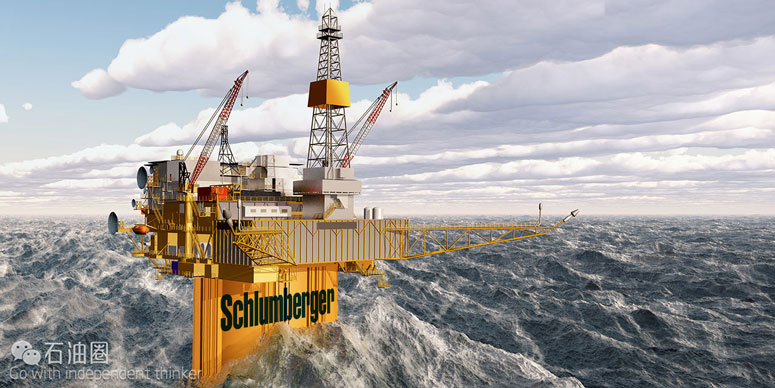In a speech yesterday Andrew Gould, chief executive of oilfield services giant Schlumberger said that if the world is to have any chance of meeting aggressive demand growth for energy in the years to come it will require massive investment by oil companies and a need for ever more advanced technology.
Speaking at the Barclays Capital conference in New York, Gould said that right now the world is still enjoying a sufficient supply of oil discovered back in the years following the price spike of the early 1980s. Sluggish investment in the 1990s and 2000s has only begun to be ameliorated by an uptick in exploration triggered by the boom period of 2003 to 2008.
Much more is needed, Gould said. He cited as a warning the International Energy Agency’s forecast for global energy demand to grow 40% by 2030, with coal, oil and gas expected to supply 80% of energy needs.
To find and develop the resources to supply that demand will require investment of $350 billion a year for the next 20 years. The industry spent an estimated $300 billion in 2008 and $245 billion in 2009.
This can be done, but to find resources to meet demand, “the industry will be challenged by more remote operations, deeper waters, more difficult logistics, increasingly complex geological settings and greater degrees of temperature and pressure.” This means decades of good business for Schulumberger.
Getting at the marginal sources will require higher prices. Gould said, “At $70 plus per barrel, most oil resources except ultra deepwater, oil shales, oils in arctic areas and oils derived from various liquid conversions remain economic—although I would add that the additional control and oversight that deepwater operations in general can now expect following the Gulf of Mexico accident will undoubtedly add cost.”
In the gulf, “the effect of the U.S. moratorium has led to a dramatic reduction in activity and revenue due to our high market share in deepwater.”
Complicating matters further, yesterday the new Bureau of Ocean Energy Management announced rules requiring oil and gas companies to speed up their time tables for plugging and abandoning wells in the gulf that are no longer producing profitable volumes. Whether small volumes of oil and gas are profitable depends a lot of the price of oil. If prices stay where they are now, analysts at Tudor, Pickering & Holt figure that the cost to deal with 650 structures cited by BOEMRE for immediate removal could be $1 billion. Considering that 3,500 out of 27,000 wells in the gulf have not been producing for more than five years, the potential costs could escalate dramatically. Decommissioning expert Superior Energy Services has surged 10% on the news of the new regs.
It’s only fair for oil companies to clean up their old facilities before hurricanes wipe them out, but the costs necessarily subtract from funds that companies have available to invest in future energy needs.
As for whether oil companies will be willing or able to muster the capex needed to meet long-term demands, that depends on a bunch of things: prices high enough to justify investment; governments resisting the urge to tax “windfall profits” needed for reinvestment; and crucially, whether governments allow access to important resources. My take: the government should end the gulf drilling moratorium now.
HOUSTON (Bloomberg) — Schlumberger’s earnings beat expectations after the world’s largest oilfield services provider cashed in on an early U.S. recovery as it waits for the rest of the world to catch up.
Excluding one-time items, the Houston- and Paris-based company reported profit of 25 cents for the third quarter, beating the 22-cent average of 39 analysts’ estimates compiled by Bloomberg. Aside from the challenges experienced by its newly acquired Cameron equipment-manufacturing unit, Schlumberger said Thursday that North America onshore sales climbed 14% sequentially.
Schlumberger follows its closest rival Halliburton in reporting an improvement in North America as crude prices have almost doubled from a 12-year low in February. Halliburton reported a surprising third-quarter profit and said it’s taking dead aim at driving up prices for its services—even if that means giving up market share. Halliburton boosted North American sales in the quarter for the first time since the downturn began in late 2014.
“People were expecting numbers to be fairly good, given what Halliburton reported,” said Rob Desai, an analyst at Edward Jones in St. Louis, who rates the shares a buy and owns none. “They didn’t disappoint from that perspective.”
Cost Cuts
To adjust for unprecedented customer spending cuts over the past two years, Schlumberger has cleaved more than $6 billion in costs, including the elimination of more than 50,000 jobs during the downturn. CEO Paal Kibsgaard echoed Halliburton in July by calling the bottom of the oil industry’s worst financial crisis in a generation.
“We maintain that a broad-based V-shaped recovery is unlikely given the fragile financial state of the industry, although we do see activity upside in 2017 in North America land, the Middle East and Russia markets,” Kibsgaard said in the earnings report. “We are therefore ensuring that we are optimally positioned to capture a large share of this upside that we can subsequently turn it into positive earnings contributions.”
Net income declined to $176 million, or 13 cents a share, from $989 million, or 78 cents, a year earlier, Schlumberger said. The result was a drastic improvement from a $2.16 billion net loss in the previous quarter. Sales dropped 17% from a year earlier to $7.02 billion.
The results were released after the close of regular trading in New York. Schlumberger, which has 33 buy ratings from analysts, eight holds and one sell, rose as much as 0.8% to $83.66 in after-hours trading and traded at $82.42 as of 5:48 p.m. The stock is up by about 19% for the year.
Global Focus
Schlumberger, which generates most of its sales outside the U.S. and Canada, told investors nearly two months ago it was expecting “slightly lower” third-quarter revenue for its Drilling Group as West Africa, Brazil and Asia see further declines in deepwater drilling.
“Working capital was negatively affected by lower than expected collections as we are now seeing widespread delays in payments from customers in all geographies,” Kibsgaard said. “This is a clear sign of the persistent financial distress across the industry.”
The international rig count fell sequentially for an eighth-straight quarter at the end of September, Andrew Cosgrove and William Foiles, analysts at Bloomberg Intelligence, wrote last week in a report. Some pressures on international pricing may linger into the first quarter next year, according to the report.
“International pricing will take time to improve, given the long-term nature of international contracts and operators,” Marshall Adkins, an analyst at Raymond James, wrote Oct. 17 in a note to investors. “Once activity begins to meaningfully grow across individual regions, we expect margins to slowly move higher over the next two years.”


 石油圈
石油圈



